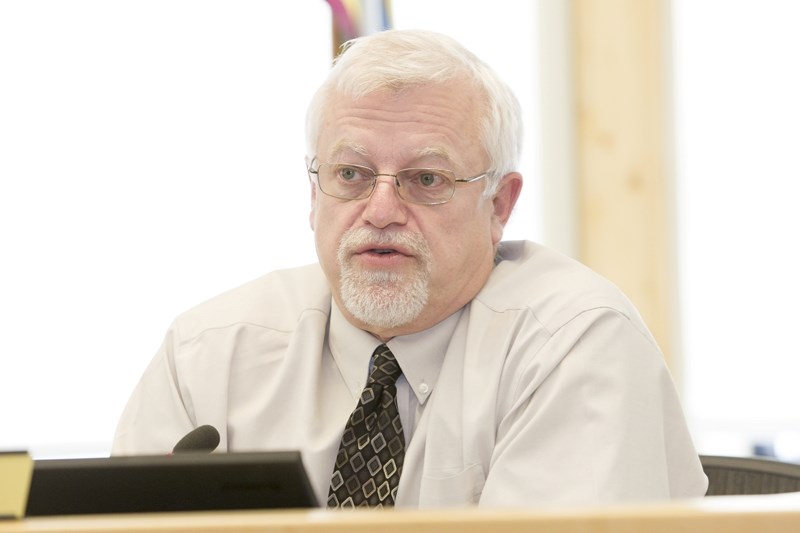Resolutions passed at the recent Alberta Association of Municipal Districts and Counties (AAMD&C) convention, including one calling for changes to the provincial wildlife damage compensation program, will hopefully prompt the provincial government to take action, says Mountain View County councillor Al Kemmere.
The AAMD&C convention was held in Edmonton on March 17 – 19. Mountain View and Red Deer counties are members of the association.
Kemmere is MVC's representative on the AAMD&C board and the chair of the association's resolution committee.
The resolution regarding the wildlife damage compensation program calls on provincial government ministries to “review the current staffing situation, program administration, budgets and funding sources of the wildlife damage compensation program to ensure its effectiveness” and “implement a monitoring and assessment program to ensure that predators, inclusive of wolves, bears and cougars are dealt with proactively.”
A background note accompanying the resolution states, in part, that “livestock producers believe the program should include all livestock (including horses), ensure fish and wildlife staff levels reflect program needs, and increase funding.”
By passing the resolution, the 69 member municipalities are “speaking with one voice” in calling for action, said Kemmere.
“This is all about setting direction for the AAMD&C board to take as new items to advocate on,” said Kemmere. “It is an important issue for those who live in the threatened area as far as having various predators or wildlife issues. It needs to be brought to the forefront for discussion.”
Mountain View County reeve Bruce Beattie also says the program is in need of an update.
“Whether it's predation or damage to feed I think there needs to be a review. I think it's something that needs to be reviewed on a regular basis,” said Beattie.
Another resolution passed at the AAMD&C convention calls on the provincial and federal governments to “enact a short-term and long-term strategy to increase railway capacity for grain shipments.”
A note accompanying the resolution states, in part, that “farmers are frustrated because, despite harvesting the best bumper crop in history in 2013, grain is backed up due to elevators not getting enough shipping to move grain to port.”
The resolution will hopefully help address an issue impacting many rural Alberta communities, said Kemmere.
“Ninety-five per cent of the (AAMD&C) members who were in the room supported that one, so that is overwhelming support to try and address the issue now and over the long term,” said Kemmere. “We are looking for a long-term solution, not just a year-to-year ad hoc solution. We need to try and make sure grain remains a priority.”
Other resolutions passed include ones calling for the provincial government to “provide funding for municipal water/wastewater infrastructure projects through the department of Environment and Sustainable Resource Development” and to “changes its policy by waiving the timber damage assessment fees on the expansion or new construction of public recreation areas.”
Proposed resolutions regarding medical marijuana production facilities and hunting on undeveloped road allowances did not pass.
The road allowance resolution called on the province to amend the Wildlife Act “so as to prohibit the discharge of a firearm from or cause a projectile from a firearm to pass along or across an undeveloped road allowance unless a person has consent of the owner and/or occupant of land located directly adjacent to the undeveloped road allowance.”
The resolution regarding medical marijuana called on the federal government to “enact legislation allowing municipalities to control placement of medical marijuana production facilities through zoning bylaws, business licences and development permits complete with conditions to be enforced at the municipal level.”
Regarding the medical marijuana resolution, Kemmere said: “The resolution was asking for something that was already there. There is a hesitancy to open that discussion up any further right now.
“It's not that people aren't concerned about the medicinal marijuana situation, but rules are already available and municipalities just need to go out and look for them to deal with these kinds of things.”
The AAMD&C advocates with the provincial and federal governments on behalf of rural municipalities. Resolutions passed at the association's conventions are used in that process.



